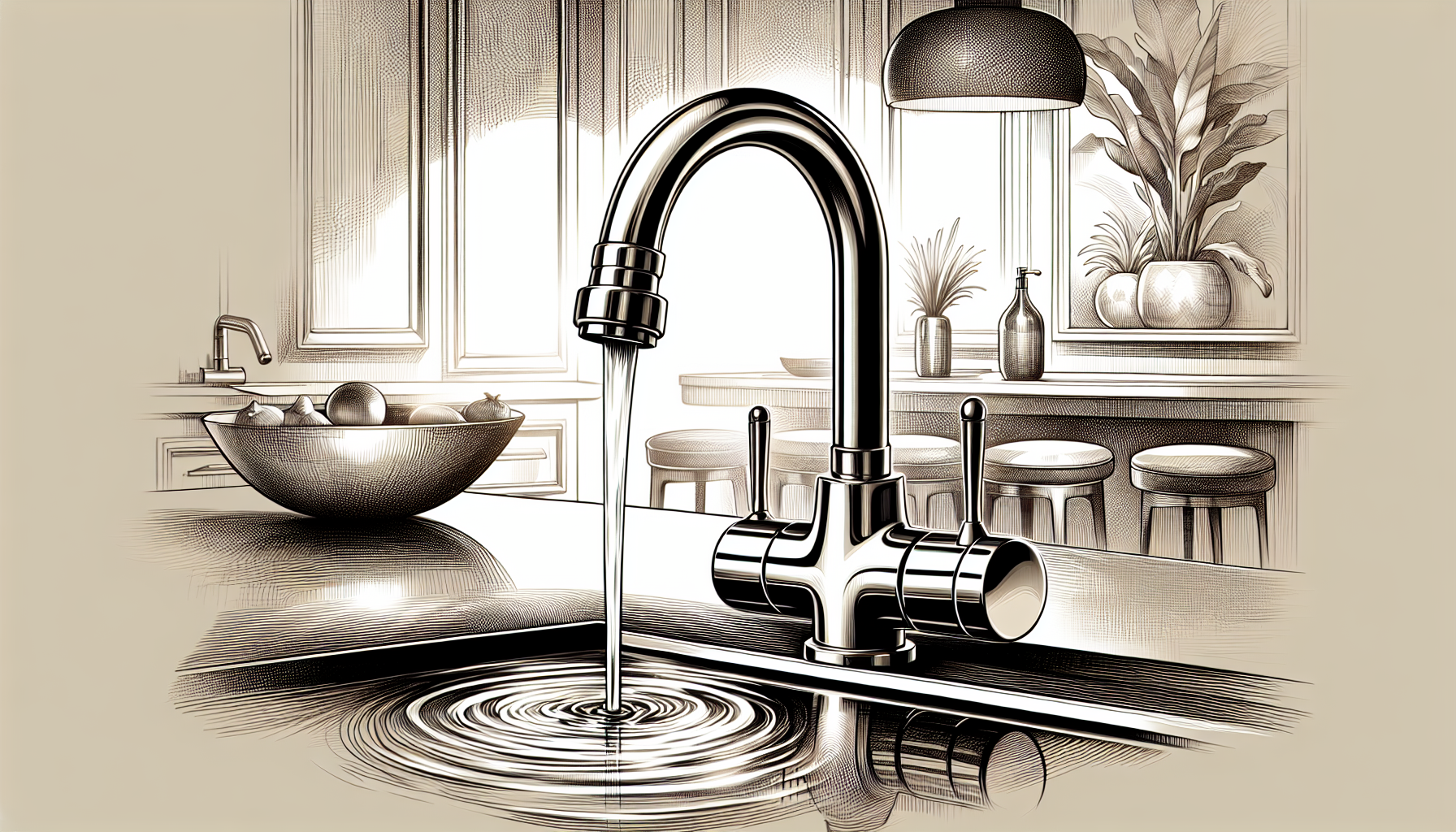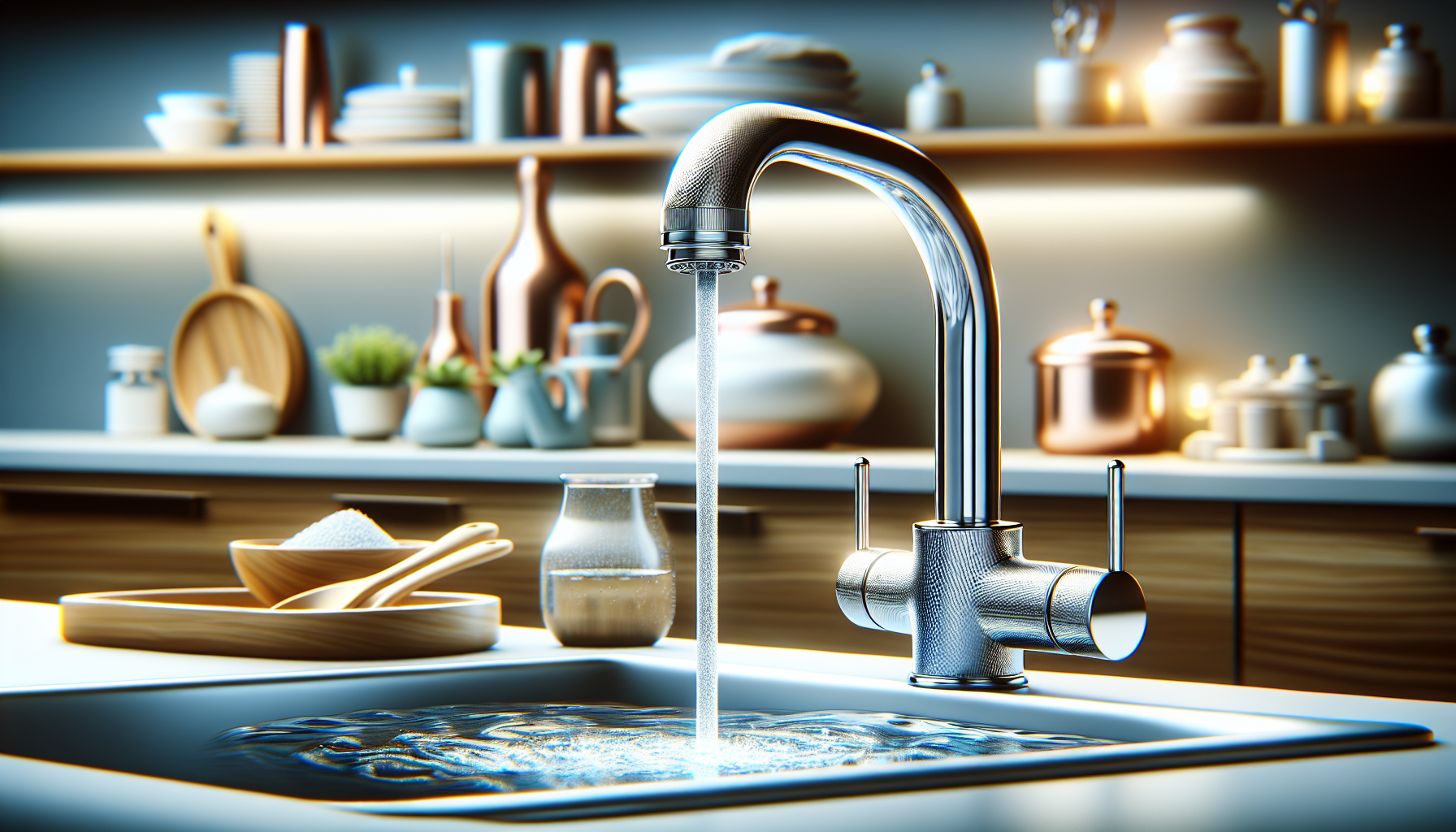Do you ever wonder how the water magically flows from your tap, effortlessly providing you with clean and refreshing water? In this article, we will delve into the fascinating world of home water systems and explore their functionality. From the importance of water pressure to the role of various components, we will uncover the secrets behind the scenes of your water supply. So, grab a cup of tea and join us on this journey of understanding how your home’s water system works.
Types of Home Water Systems
Well Water Systems
Well water systems are a common choice for households located in rural or remote areas. They rely on underground wells as their water source. A well is typically drilled deep into the ground to access a water table or aquifer, which serves as a natural reservoir for groundwater. Well water systems require a pump to draw water from the well and a pressure tank to store and maintain water pressure.
Municipal Water Systems
Municipal water systems, also known as public water systems, are supplied by local governments or water utilities. These systems provide treated and safe drinking water to households in urban or suburban areas. Municipal water systems are usually sourced from rivers, lakes, or reservoirs. The water is treated to remove contaminants before being distributed through a network of pipes and delivered directly to homes.
Rainwater Harvesting Systems
Rainwater harvesting systems are an environmentally friendly and sustainable option for homes. They collect rainwater from rooftops or other surfaces and store it for future use. Rainwater harvesting systems often involve the use of gutters, downspouts, and storage tanks to collect and store rainwater. The collected water can be used for various non-potable purposes, such as watering plants or flushing toilets, but it usually requires additional filtration or treatment for drinking.
Surface Water Systems
Surface water systems rely on nearby surface water sources such as rivers, lakes, or streams. These systems use extraction methods like intake pipes or suction devices to draw water from the surface water source. Surface water systems may require additional treatment and filtration to remove impurities before the water can be used for drinking or other household purposes.
Point-of-Entry Systems
Point-of-entry systems treat water as it enters the house, ensuring that all water used in the home is treated and purified. These systems are typically installed where the main water line enters the house. Point-of-entry systems are designed to address specific concerns such as sediment, chlorine, or other contaminants that may affect the overall quality of the water throughout the house.
Point-of-Use Systems
Point-of-use systems, on the other hand, are installed at specific faucets or fixtures within the home. These systems are primarily focused on treating water at the point of use, such as under-sink filtration systems or showerhead filters. Point-of-use systems are commonly used to address specific concerns in certain areas of the house, such as improving the taste or smell of drinking water or reducing chlorine in shower water.

Components of a Home Water System
Water Source
The water source is the initial point where water enters a home’s water system. The source can vary depending on the type of water system. Well water systems draw water from underground wells, municipal water systems use treated water from local utilities, rainwater harvesting systems collect rainwater from the roofs, and surface water systems extract water from nearby rivers or lakes.
Pump
In systems that rely on wells or surface water, a pump is necessary to draw water from the source and deliver it to the rest of the home’s water system. There are different types of pumps, including submersible pumps, jet pumps, and centrifugal pumps. The appropriate pump type and size depend on factors such as the depth of the well or the distance from the water source.
Pressure Tank
A pressure tank is an essential component in well water systems as it helps regulate and maintain consistent water pressure throughout the house. The tank stores water and uses compressed air to create pressure. When a faucet or fixture is turned on, the water is released from the pressure tank and flows through the pipes, providing adequate water pressure for everyday use.
Filtration System
Filtration systems are installed in water systems to remove impurities and improve the water’s quality. There are various types of filtration systems available, including activated carbon filters, reverse osmosis systems, and sediment filters. The choice of filtration system depends on the specific water quality issues to be addressed, such as chlorine, sediment, or heavy metals.
Water Softener
Water softeners are designed to remove minerals, specifically calcium and magnesium, from the water. These minerals can cause scale buildup, reduce soap efficiency, and negatively affect the lifespan of appliances. Water softeners use a process called ion exchange to replace the calcium and magnesium ions with sodium or potassium ions, effectively softening the water.
Water Heater
Water heaters are responsible for heating water for various household needs, such as bathing, washing dishes, or doing laundry. There are different types of water heaters, including tankless water heaters, storage tank water heaters, and heat pump water heaters. The choice of the water heater depends on factors such as the household’s hot water demand, available space, and energy efficiency preferences.
Water Distribution System
The water distribution system refers to the network of pipes and plumbing fixtures in a home that carries water to various faucets, showers, toilets, and other water outlets. It is crucial for ensuring water flows smoothly throughout the house. The pipes can be made from different materials, such as copper, PVC, or PEX, each with its own advantages and considerations.
Shutoff Valves
Shutoff valves are installed at different points in the water system to allow the isolation of specific areas or fixtures. They are essential for maintenance and repair purposes. Shutoff valves can be located near fixtures such as sinks or toilets or at various junctions in the plumbing system, enabling quick and easy access to turn off the water supply.
Pressure Regulator
A pressure regulator helps maintain a steady and safe water pressure throughout the home’s plumbing system. It keeps the water pressure within a desirable range, preventing excessive pressure that can cause damage to pipes, fixtures, and appliances. Pressure regulators are typically installed near the main water supply line, right after the water meter.
Water Meter
A water meter measures the volume of water consumed by a household. It is usually located near the main water supply line where the water enters the house. Water meters provide valuable information for utility billing, water conservation efforts, and monitoring water usage. Regular maintenance of the water meter ensures accurate readings and reliable water consumption data.
Understanding the functionality of home water systems is crucial for maintaining a reliable and efficient water supply within your household. Whether you rely on well water, municipal water, rainwater harvesting, or surface water, knowing about the components and their roles in the system allows you to make informed decisions regarding maintenance, upgrades, or improvements. By understanding the water source, pump, pressure tank, filtration system, water softener, water heater, water distribution system, shutoff valves, pressure regulator, and water meter, you can ensure a constant and safe water supply throughout your home. Remember to regularly maintain and inspect your water system to prevent any potential issues and enjoy clean and quality water year-round.


